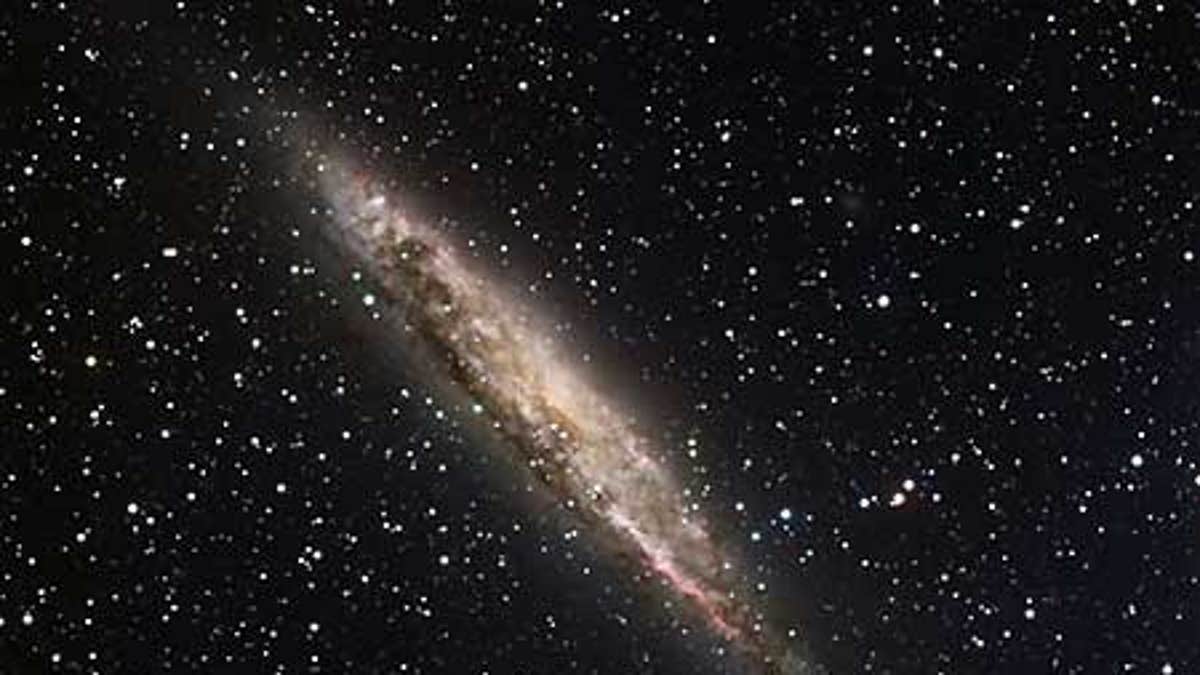
A relatively nearby galaxy that closely resembles our own Milky Way can be seen edge-on in a new image.
Observations of the galaxy, NGC 4945, suggest that this hive of stars is a spiral galaxy much like our own, with swirling, luminous arms and a bar-shaped central region.
But that's where the similarity seems to end: NGC 4945 has a brighter center than the Milky Way; the look-alike's center likely harbors a supermassive black hole that is devouring reams of matter and blasting energy out into space.
The new portrait of NGC 4945, which lies some 13 million light-years away in the constellation of Centaurus, was taken by the Wide Field Imager (WFI) instrument at the 2.2-meter MPG/ESO telescope at the La Silla Observatory in Chile.
NGC 4945 appears cigar-shaped from our perspective on Earth, but the galaxy is actually a disc many times wider than it is thick, with bands of stars and glowing gas spiraling around its center. Other spiral galaxies, like ours, are similarly flattened and typically contain a central bulge of stars around a black hole.
Special filters on the telescope isolate the color of light emitted by heated gases such as hydrogen, showing sharp contrasts in NGC 4945 that indicate areas of star formation.
Other observations have revealed that NGC 4945 has an active galactic nucleus, meaning its central bulge emits far more energy than calmer galaxies like the Milky Way.
Black holes gravitationally draw gas and dust into them, accelerating and heating this attracted matter until it emits high-energy radiation, including X-rays and ultraviolet light. Most large, spiral galaxies, including the Milky Way, host a black hole in their centers, though many of these dark monsters no longer actively "feed" at this stage in galactic development.
